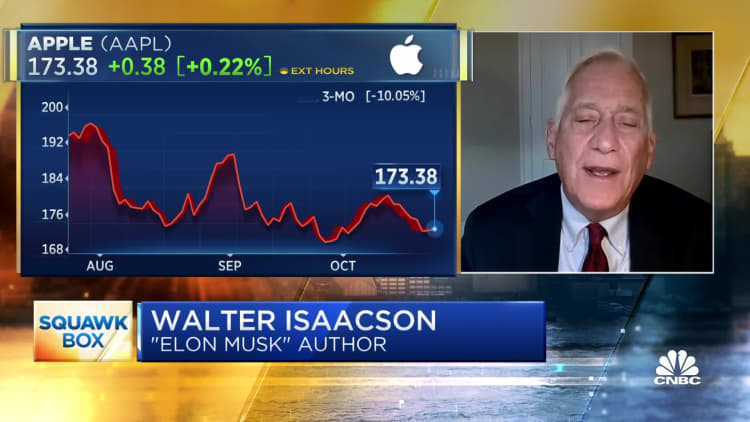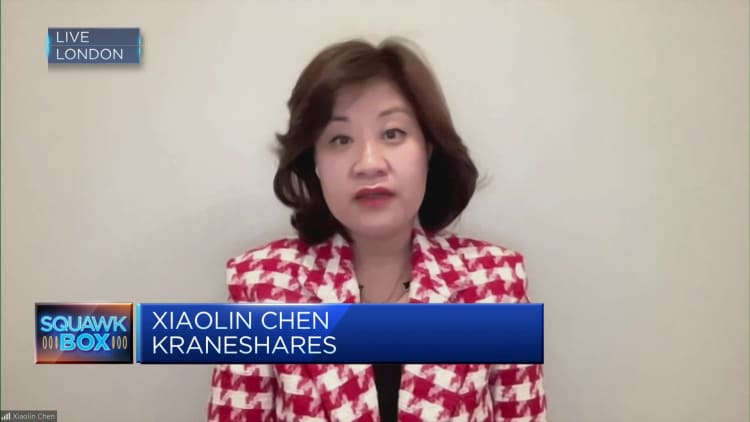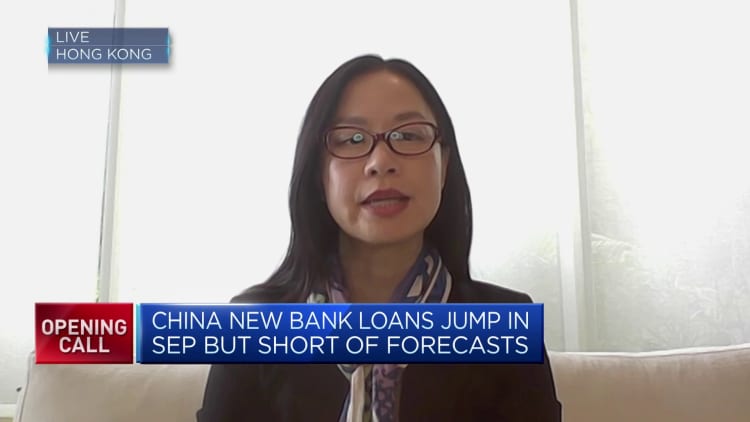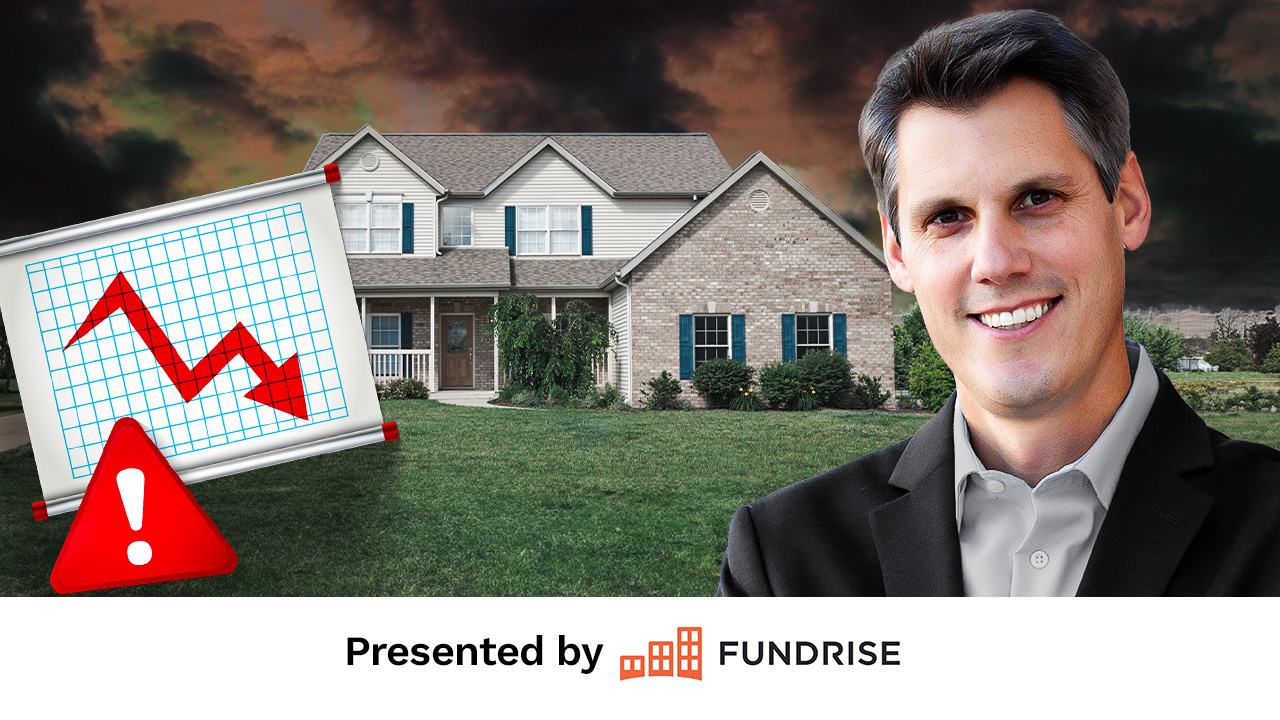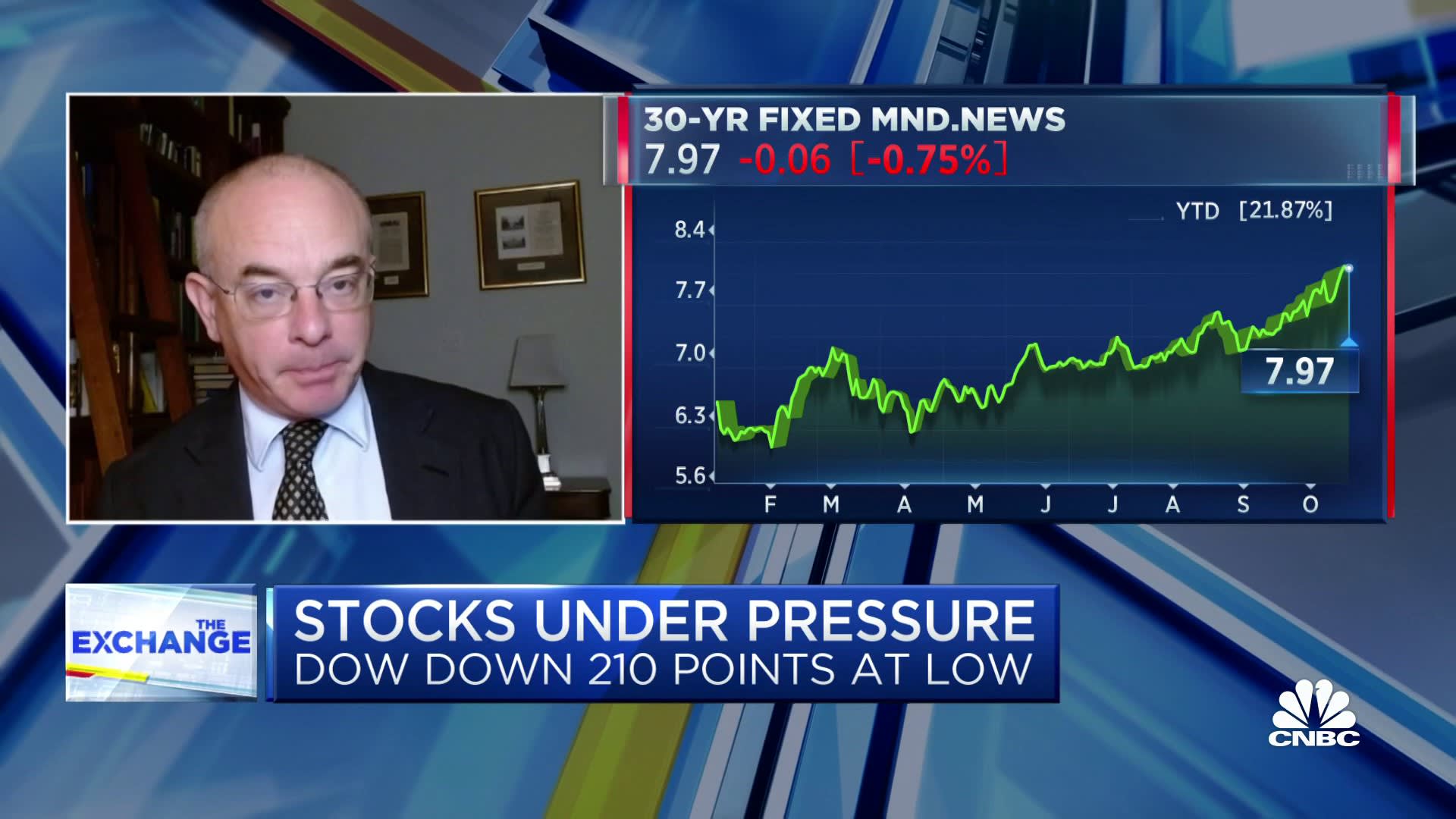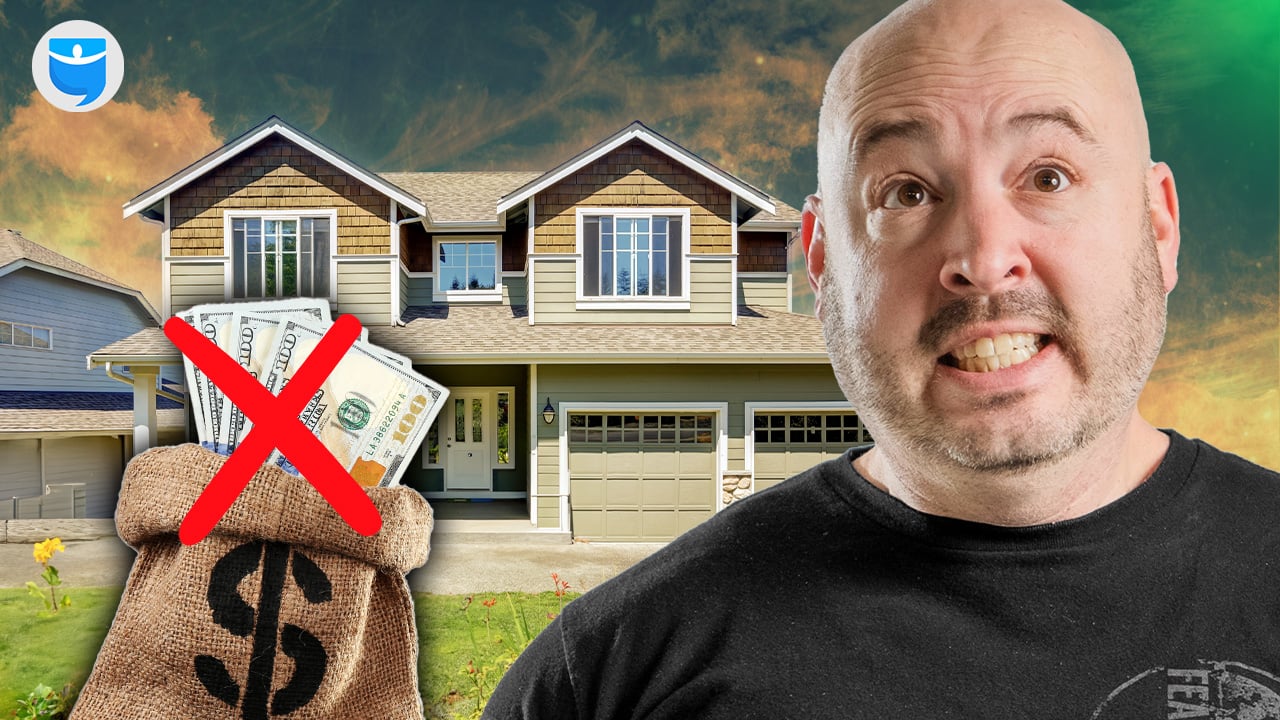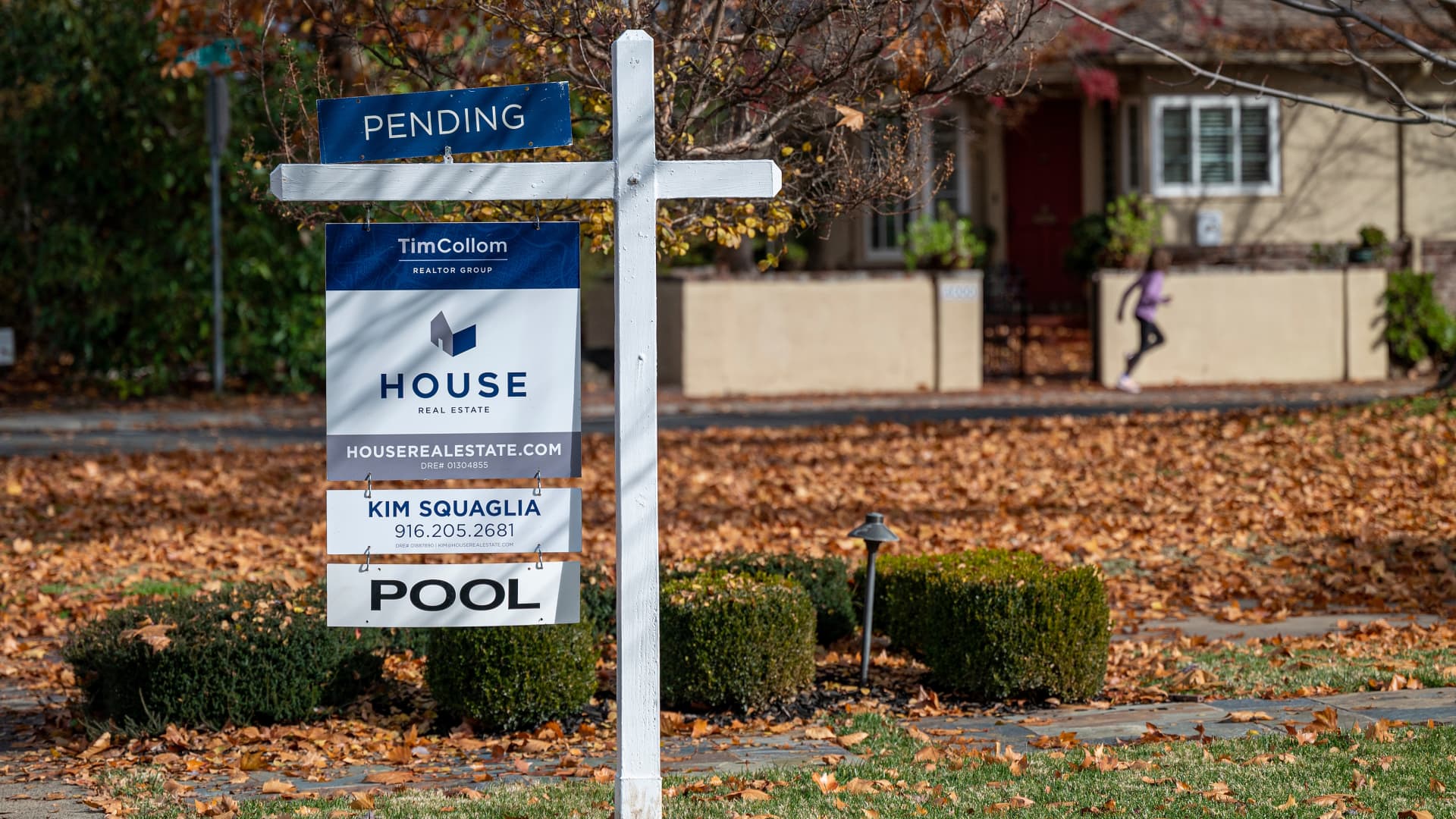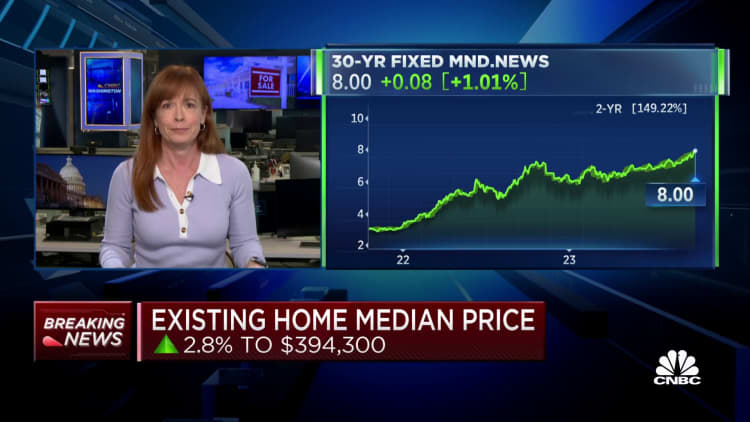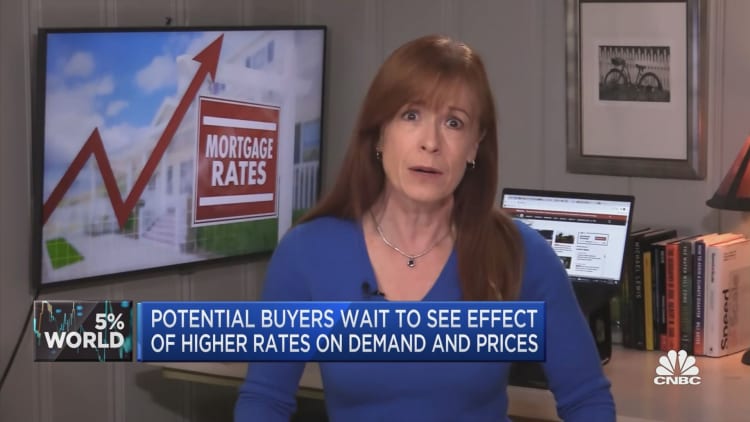David Greene:
This is the BiggerPockets Podcast Show 834. Using a HELOC right now is not a bad idea if you could pay it back off. Flipping a house, making a loan, doing a BRRRR, that kind of stuff makes sense. But if you’re doing this for the down payment of a house and you’re locked in and it goes the wrong way, the economy getting worse, tenants having a hard time paying their rent, now you’re getting double squeeze and it could go pretty bad pretty quickly, even when you did nothing wrong, just the market turning against you.
What’s going on, everyone? This is David Greene, your host of the BiggerPockets Real Estate Podcast, the biggest, the best, the baddest real estate podcast in the world every week, bringing you the how-tos, answers, secrets, and strategies that you need to be successful in today’s ever-changing market. Today, we have a Seeing Greene episode. I know that the consistent green light that is usually behind me is not here. That’s because I’m traveling.
I actually came out to Florida a little bit earlier to promote the book Pillars of Wealth on the Valuetainment Podcast, as well as be ready for BPCON, which is right around the corner in Orlando. I’ll be driving there from my rental in Fort Lauderdale where I am now, and I brought some backup. Rob is joining me, looking handsome as ever, to take your questions about real estate and give our perspective, the Greene perspective, on how they can be solved, and today’s episode is awesome.
Before we get to it, we have a quick tip. My quick tip is take care of your short-term rentals when you’re staying in them. I walked into my rental to record the podcast today before the cleaners came, and I’ve noticed that there are fake eyelashes all over the place. They actually look ironically like caterpillars. And in Florida, there are caterpillars everywhere.
And one of them was moving and I thought it was one of the fake eyelashes moving and jumped out of my shoes as I thought that an eyelash had been possessed by a demonic entity, only to find out that it just looked a lot like a caterpillar. Rob, do you have any crazy Airbnb stories that you can share for today’s quick tip of things you’ve seen in these properties?
Rob Abasolo:
Yeah, I think just go stay at your property and bring a screwdriver and tighten furniture. Every time I go stay at a property, I’m like, dang, this chair was about to fall apart. One more person sitting on this and I’d have a lawsuit on my hand. So I would say empower your cleaners with a screwdriver at the very least and encourage them to tighten things up, because things get a little loose there whenever guests are just jumping around everywhere, not taking care of your stuff as they would take care of their own.
David Greene:
Ah yes, I refer to this as Ikea roulette. All right, in today’s show, you are going to love it. We get into what to do when you’re new and have a growing family and your property may make sense as a rental. A few scenarios with paid off properties, how to leverage them, if we should take debt out, how to get them performing optimally, scaling issues, is the market one where you should be scaling aggressively or is a more measured approach, more popular, as well as a two star review that you’re not going to want to miss. All that and more in today’s Seeing Greene. All right, let’s get to our first question.
Rob Abasolo:
Welcome, Tim. So what’s on your mind?
Tim Alhanati:
Hey, guys. Yeah, thanks for having me on. So I live in Orange County, California and I’ve been starting to listen to the podcast a little bit recently. I’m really new into the real estate investing world. My wife and I own our house, probably about 300K in equity, and we’ll eventually want to move out. We’re expecting our first child.
And once the second one comes, we’re going to be a little bit crammed and definitely want to get into the investing world, whether it’s in the SoCal area or starting into long distance investing, whether it’s better to get into the long-term rental space or short-term. A few different questions that I’m pondering based on being early into it.
David Greene:
Okay. Tim, are you an analytical man?
Tim Alhanati:
Yes, I’m a numbers guy, absolutely.
David Greene:
Not a surprise. I could tell from what you’re talking about. Okay, so you’ve got a little bit of equity in your primary home and you’re considering tapping into that with a HELOC, right?
Tim Alhanati:
Yes, I’ve looked into it. Yep.
David Greene:
And your comfort level is probably much more geared closer to long-term investing. Short-term is something that probably scares you a little bit, but you hear people talk about it, so you’re willing to give it a chance?
Tim Alhanati:
Nail on my head. Absolutely.
David Greene:
Okay, and then have you considered just renting out the town home and buying something with the low down payment as a house hack when the baby comes, or do the HOAs of the town home make it not cash flow?
Tim Alhanati:
No, it would cash flow a little bit. I’ve run the numbers a little bit. It would cash flow. I mean, luckily we bought it four years ago. The mortgage was pretty low. We got a low rate, and I think the market rent would be pretty good. So I think it’d probably be about 3,300 or so. I think we pay about 2,100 including the PMI and escrow and all that. So I mean, we have a little bit of capital right now to help out with a new house down payment, but obviously living in Southern California, it’s a little tough.
David Greene:
All right, Rob, I’m going to let you start. What do you think?
Rob Abasolo:
Yeah, so my question first and foremost is, are you doing this right now in this point in your life because you need money, or are you doing this right now because you just want to get into real estate?
Tim Alhanati:
Good question. Not really in need of money as far as any sort of money crunch, but definitely wanting to get into it as soon as possible just to always thinking 10 years from now, I’m glad I got into the real estate market, just more of a wealth building.
Rob Abasolo:
Great. Okay, so if that’s the case, just based on the fact knowing a little bit about you, knowing how much money… You said you have a little bit of capital. You want to get into it. I might actually push you a little bit more towards the long-term rental side for a couple of reasons. You said you’re analytical. I think it’s pretty easy to comp out what you’re going to make on a long-term rental. I think it’s a relatively standard process for doing that. I think you can be pretty calculated with that.
Not that you can’t with short-term rentals, you totally can. Short-term rentals are just more volatile, and you’re going to have some high seasons. You’re going to have some low seasons. It’s not going to be consistent. And so if you’re just looking for something where, “Hey, I want to get in, I’m cool to play the long game,” long-term rentals are definitely going to be that. They’re not going to be super high cash flow most of the time. There’s exceptions to that rule. You’ll make a little bit of money every single month.
And in 10 years, I think that’s definitely something where you’re going to say, “Well, hey, I’m glad I did that 10 years ago. I didn’t make a ton of cashflow, but 10 years later my appreciation is super, super high.” So I think I might push you a little bit towards there, especially considering that you’re in Southern California. And I think if you’re going to go the long distance route and if you’re open to that, you might just have a little bit more stabilization on the long-term side of things.
I don’t think you’re going to be able to get a cash flowing long-term rental in SoCal. Maybe a short-term, but that will require more money, I think. What about you, Dave? What do you think?
David Greene:
I’m thinking more about Tim’s personality than the actual market right now, and I don’t think we talk about this enough within real estate investing, right? We tend to speak about it as if it’s stock trading. So with stocks it’s like, well, what’s the best company? What’s the best strategy? Because who David is as a person doesn’t matter. I’m just pushing a button on my computer, on my phone. But real estate investing is more hands-on. There’s more creativity. There’s more problem solving. There’s more organizational skills.
It’s more like piloting an aircraft, like a fighter jet, than it is to just putting something on autopilot and letting it go. The skills of the pilot matter, as well as the type of the plane they’re flying. They sort of create this hybrid of success, and so your skills as a fighter pilot are going to play into this. If you’re more analytical, if you’re a little more risk averse, you want something that’s a little more predictable, I think you do well as a short-term rental investor actually, because the smarter that you are, the more creative that you are, the better your work ethic, the more likely you are to succeed.
I’ve been going through a really rough patch for about a year and a half right now with all of business and all of my rentals and all the people I have working with me, trying to move these pieces around to get everything to fit. What I found is that a lot of the problems with business and real estate come from the belief it should be passive. And frankly, that’s the way that real estate investing has been marketed for a long time. So the more passive that you want something to be, the more headaches you’re going to get from it.
It’s always, I delegated it. I have my org chart. Someone is supposed to be in charge of this. What do you know? That person doesn’t do a good job. The whole thing falls apart, and Rob’s on the phone while we’re in the middle of recording a show trying to get a hot tub delivered on one of his decks. And I’m making fun of him because I say someone should be doing it, but Rob has figured out that it needs to get done right and I’m the only one that I trust to do it. So Tim, I’m going to come back to you. First off, are you okay accepting real estate is not going to be as passive as maybe you’ve been told?
Tim Alhanati:
Yeah, yeah. I think honestly, even with my current job, I mean, I stick to the hours and I’m lucky that I don’t have to work longer hours than I would. Normal 40 hour a week. I’m willing to take the time outside of that and spend time doing it.
David Greene:
So if you’re willing to put the time and you have the skillset, which it sounds like you do, you will get a better return on your time in the short-term rental space. Because as a traditional rental, like all those ones I have, my skills as an investor, once you buy the property, there’s not a whole lot you do. You got what you got, right? Your ability to look at that property and try to manage it will really only help you when you’re trying to save money on repairs. That’s about the only time.
You don’t do anything to increase your revenue. You can’t make the property taxes go down. With the short-term rental, you have a lot more control over the expenses and the income, which results in a better NOI, which gives you better profit margin, which opens up doors to hire more people. So I would like to see you get in that space. Now, I don’t know if I would like to see you go there right away. All right? If you moved out and you house hacked, which I think you’d be more comfortable doing, could you do a short-term rental on that town home or are those prohibited?
Tim Alhanati:
No, I don’t think so. I haven’t looked into it. I’ve actually also thought of doing a midterm even for that one.
David Greene:
That you can do.
Tim Alhanati:
Yeah.
David Greene:
Yeah, that’s what I do in California. They’re 30-day rentals. Not everywhere’s the same, but most of the municipalities in California will not let you do an Airbnb unless it’s your primary.
Tim Alhanati:
I think the one I have right now is a little versatile. I think I could honestly go either way with it.
David Greene:
That’d be great. I would like to see you house hack. Put 5% down on something else. Get as big of a house as cheap as you can, as ugly as you can, so you can add as much equity, as many bedrooms, as many units, whatever you can do to make that thing a good rental property later. And then just take your time. No pressure. Do you like a live and flip type of a situation? When you’re ready, live in part of it with your growing family, rent out another part of it to somebody else. Turn that town home into a short-term rental or a medium-term rental.
And if it goes bad, your fallback plan is to make it into a traditional rental, which you already know will cash flow. I like this plan because it lets you screw everything up and then figure out what went wrong and fix it without a catastrophe. You’re not putting 25% down and a hundred grand on a rehab and just closing your eyes and hoping for the best with this deal. You’re getting exposed to what is going to go into real estate investing without making it a huge capital risk. Rob, you see me hosing that?
Rob Abasolo:
No, I like it. Look at us switching sides over here for once.
David Greene:
I saw the look on Rob’s face when I said short-term rental. He’s like, what?
Rob Abasolo:
I was like. And also one thing I wanted to touch on, David, he mentioned using his HELOC as maybe part of the down payment or towards the down payment. What do you think about that?
David Greene:
I’m not against it in all cases. I’m more against it now than I was a year ago. HELOCs are adjustable-rate mortgages, which means we tend to analyze properties based on what they are right now. I need to come up with a name for this, like right now itis or something. People always analyze a property with what’s the rent right now? What does Rentometer say? What is the mortgage right now? Well, rents change where your expenses usually don’t, okay? But with an adjustable-rate mortgage, your expense changes too.
The model of looking at it on a spreadsheet only tells you the minute that you close on the deal, what you can expect to get is likely rates are going to keep climbing. I just did a video about this on my YouTube yesterday that we don’t know, but the mortgage-backed security market is getting a little bit fickle. They’re like, I don’t know if we want to keep buying all these mortgage notes right now because they think we could be heading into a recession. So they have to raise the mortgage interest rate to get people to buy them.
And if that continues, it’s going to create pressure that rates are going to keep going up. That’s not really tied to the Fed rate like people think. It’s tied to the demand in the market. So using a HELOC right now is not a bad idea if you could pay it back off. Flipping a house, making a loan, doing a BRRRR, that kind of stuff makes sense.
Rob Abasolo:
Somewhere you can get out of it pretty quickly, right?
David Greene:
Yeah. But if you’re doing this for the down payment of a house and you’re locked in and it goes the wrong way and you start to hit trouble with the economy getting worse, tenants having a hard time paying their rent, now you’re getting double squeeze and it could go pretty bad pretty quickly, even when you did nothing wrong, just the market turning against you.
That’s one of the reasons I didn’t say out loud, but I was thinking I’d like to see you get into a house hack because you can put less money down. You don’t have to tie into that HELOC. You can keep that powder dry.
Rob Abasolo:
I agree with all of that. I just want to clarify though, HELOC being a home equity line of credit, so you’re basically using that equity in your house to fund the next one. Is it an adjustable-rate HELOC? Because some are fixed. I have a fixed one from a few years ago, and I think that makes a pretty big difference. Tim, is it fixed or is it adjustable?
Tim Alhanati:
I haven’t done anything with it specifically. I was just curious. Most likely variable.
Rob Abasolo:
Okay. Yeah, if it’s variable, I think David’s spot on. If it’s fixed, I mean, you can calculate it, right? Even if it’s a high interest. If that delta between using that to cancel out your PMI is worth it, then obviously data would say to do that. Just keep in mind that when you use your home equity line of credit, that will count towards your debt to income ratio, so that may lower your purchasing power on whatever property you buy.
Tim Alhanati:
Yeah, that’s new information I found out recently.
Rob Abasolo:
Yeah, yeah.
David Greene:
Very good point there, Rob. And I love that you brought that up because for everybody listening, if you’re going to get a HELOC, now you know to ask the question, do you have a fixed rate HELOC option? All right, Tim, we’re going to be getting to our next question. But before we do, where can our audience find you?
Tim Alhanati:
I’m on Instagram. I’m @TimAlhanati. Pretty easy.
David Greene:
@T-I-M-A-L-H-A-N-A-T-I. It wasn’t as easy as you made it sound.
Tim Alhanati:
It’s a tough one. It’s a tough one.
David Greene:
I’m @timvanderschlakenhadsenfuchi. Very easy.
Rob Abasolo:
Wow, what a riff. I love it.
David Greene:
All right, thanks, Tim. Let us know how it goes and reach out to me if I can help you in any way. Okay?
Tim Alhanati:
Sounds good. Bye.
David Greene:
And thank you, Tim, for joining us today. Remember, everyone get your questions in at biggerpockets.com/david to be featured on the show. We hope that you are enjoying the shared conversation so far. Rob and I certainly have, and thank you for spending your time with us. Please make sure to like, comment, and subscribe on YouTube, as well as leave us a review wherever you listen to your podcast. We actually wanted to read one of the reviews that someone left us for all of you to hear with a specific way that you can help us out after hearing this.
So this was a two-star review that came in from GJOVI33 who said, “We will tell you all the best secrets,” with an exclamation point, and then in “behind our paywall. Buy our masterclass to learn more.” I can understand the frustration with that. I don’t see how it has anything to do with BiggerPockets.
Rob Abasolo:
Right, right.
David Greene:
BiggerPockets doesn’t really offer paid courses. Bootcamps is the only thing I think, and they’re pretty dang cheap.
Rob Abasolo:
Right. They’re super cheap, and then we have BP Pro, which again is mega cheap and optional. And you get, honestly, I think most of the content on the website for free. So the podcast is free. I think what happened was his username is GJOVI33. He must be Bon’s brother, and I think he’s just got a chip on his shoulder that he never…
David Greene:
Because he was never the Bon Jovi that made it?
Rob Abasolo:
He was never the Bon Jovi. He was the G Jovi in his family, and I think he was just… Yeah, he’s just out to get it. He’s out to let us have it kind of thing, you know.
David Greene:
Well, Rob and I believe in turning lemons into lemonade, and here’s how you can help us with our lemonade stand. If we get more of you to leave a five star review to overwhelm this two star review, this can actually be a net positive. So please head over, leave us a good review, an accurate and thorough review. This doesn’t make any sense that this person’s upset that you have to buy a masterclass. Definitely not a BiggerPockets thing. But enough of that, moving into the YouTube comments that y’all have left on previous Seeing Greene episodes from FlorianWu7256.
“It was actually super interesting to watch both of Rob and David’s different perspectives and conclusions. Our individual opinions are influenced by our own life goals and life experiences made me even more open-minded. Thank you.” And from Riz Keysetya, “Great episode, David. I have question. I bought multifamily investment properties using a DSCR loan. My question is, can I move into the property since this property is an investment property? Please advise. Thank you.”
Okay, in most DSCR loans, I don’t know about your specific loan, your loan documents would say so, but in the vast majority of them, all the ones I’ve seen, you cannot move into the property if it is an investment property. Now, what I can’t say for sure is if you are prohibited from moving in it or if you are stating when you bought it that you are not going to move in it and it was not purchased with the intention of moving into it. So you would need to check with a loan officer that originated that loan, if that was us at the One Brokerage.
Send an email to your loan officer to ask this question. We’ll get you an answer. But if you got it from someone else, you’re going to need to go ask them. Most DSCR loans, they make you say that this is not something that you’re buying to live in because they’re using the income from the property to approve you for the mortgage and you’re not going to be able to generate income if you’re living in the unit. Does that make sense, Rob?
Rob Abasolo:
Yeah, it does. It does. I would bet more than likely that you cannot live in there.
David Greene:
The only question is I don’t know if there’s a law that says you’re not allowed to do it, or if you just said, “I am not intending on living in it when you bought it,” and you swore that you weren’t at the time.
Rob Abasolo:
Right. Well, that’s very true. For sure there’s usually documentation that you sign that’s basically like a, “Hey, I promise I will not live in this investment property.” Just read your loan docs when you sign them. I know, crazy concept. But nowadays, I probably spend a little more time at the closing table than I used to a few years ago.
David Greene:
All right, our next comment comes from episode 825. LOL. I love the three star from Debbie Part. It made me laugh. This is where Rob and I, or this is where we read a three star review from somebody else that wasn’t super thrilled with the podcast. Hey, we bring you the good, the bad, and the ugly. Which of those three would you qualify for, Rob?
Rob Abasolo:
I’m good with just being the middle there. I think I’m going to go the good. Oh, shoot. Sorry, I don’t know why I was thinking good, better, best. Maybe I’m just always optimistic.
David Greene:
Yes, you are. I think that’s what we learned about you.
Rob Abasolo:
I think I’m going to go good then. I’m going to be arrogant on this one. I’m going to say good.
David Greene:
All right, Rob, put on your earmuffs before I read this one. Our next quote comes from Alexandra Padilla. “Loved having you both on a Seeing Greene episode. I say you keep it going. Rob was my original catalyst into short-term glamping rentals, and you, David, have been my catalyst to become a full-time real estate professional. Having you both together is a big bonus. I vote to continue to bring Rob on. Thank you both for all the knowledge and real encouragement just to do something to keep moving forward. You guys rock. By the way, I love bald men. So sexy.”
Folks, this is a groundbreaking moment in the world of BiggerPockets. This might be my first compliment from a female in YouTube comment history ever. It is a running joke that I will frequently get comments from somebody, like if I’ve been working out and my arms look bigger, or the lighting was really good, always from dudes. I have a huge dude fan base. Never once has a woman said something. Let’s hope that Alexandra Padilla is a real profile and not something that a dude made.
Rob, I’m happy to have you here with me for this. How do you feel seeing my first ever compliment from a possible female fan calling me… Well, maybe she’s not even saying I’m sexy. She’s just saying bald men are sexy. But indirectly, I’m still going to take it.
Rob Abasolo:
Can I take off my ear muffs? I haven’t been listening.
David Greene:
Good point.
Rob Abasolo:
Okay, yes. I’m just reading up on this, catching up. Look, man, I’m really happy for you. I’m really proud of you. I think this is a big moment for you. I think there’s a moment where things change for people, and this is your moment, man. I think, Alexandra, if you’re here, if you’re listening to this, reach out. Reach out to David on Instagram or reach out to me. I’m happy to make the connection and good day to you.
David Greene:
And if you are someone who’s been listening to this podcast, chasing your dreams, trying to hit financial freedom, let this be a moment of encouragement for you. I’m going to share this victory with all of you. Because if I can get a compliment from a female on my physical appearance on this podcast, anyone can do anything. All right, and our last comment here comes again from Apple Podcast. This one from Justice Short, who gave us a five star review, labeled grateful.
Rob Abasolo:
Just as short as who?
David Greene:
What’s that?
Rob Abasolo:
Just as short as who?
David Greene:
Oh, that’s funny.
Rob Abasolo:
Do you think that’s what they’re going for?
David Greene:
Rob, Justice.
Rob Abasolo:
Justice Short.
David Greene:
Yeah, not just as.
Rob Abasolo:
I used to know a guy named Justin Time. No, no. Justin Case. Real guy.
David Greene:
Yeah, that’s a funny name.
Rob Abasolo:
Yeah, sorry. Carry on.
David Greene:
Extremely grateful for this podcast. I loved it when Brandon was the host, but honestly, love it even more with David as the host and Rob as the co-host. This podcast offers everything any real estate investor could look for, from mindset to economics and practical advice to grow your portfolio. Appreciate you for all that you do and continuing to make me laugh with you all along the way. Now, that is a pretty nice review. How does that make you feel, Rob?
Rob Abasolo:
That is heartwarming. Yeah, I’m just like, who makes her laugh more, me or you? Both. Is it the dynamic?
David Greene:
See what happens? One compliment and all of a sudden it’s a competition with you now. I called you handsome Rob the whole time, and one person calls me sexy and you’re like, “Wait a minute, what about me?”
Rob Abasolo:
Yeah, exactly. I got to get fed some of the compliments too. Justice Short, let us know. Let us know in excruciating detail which jokes have made you laugh.
David Greene:
Excruciating detail. That is funny. All right, and just to keep it real, it is very difficult to make a podcast that focuses on practical advice, overall principles and philosophy, keeping it entertaining, keeping it moving quickly, and try to make people laugh. So thank you candidly, Justice Short, for the observation you left and the review. And again, if you like this, please go leave us a review wherever you listen to your podcast. They help us a ton.
Rob Abasolo:
They really do.
David Greene:
All right, our next question comes from JR Matthews in Boston, Massachusetts.
JR Matthews:
Hi, David. My name is JR Matthews. I live in Boston, Massachusetts. I’m standing on the deck of a waterfront two family that I’m house hacking with my beautiful wife, Crystal. I was able to get this house as a result of following the systems I’ve learned from your podcast and books. I have five small multifamily homes and I want to scale. I’m running into trouble getting a HELOC due to DTI. I don’t want to cash-out refi and lose my rates below 4%, and I’m not crazy about selling any of the properties.
Should I keep hunting for a HELOC, sell the properties and 1031 into something better, or find a deal that’s good enough to make a cash-out refi worth losing the low rates? If I live to the average age for men in the US, I have 12,775 days left to make an incredible life, so I’m itching to make some moves here. Would love any advice you have to offer. Thank you guys so much for what you do.
David Greene:
All right, Rob, this is an interesting dilemma and one I hear on Seeing Greene often. I know you’re not always with me on these shows, but welcome to the club. Here’s what’s basically going down. I have something good going for me and I don’t want to mess it up, but I also want to scale. It looks like this is a capital problem.
Now, most of the time we take equity, we turn it into capital. We reinvest it. We do that through a HELOC, a cash-out refinance, or selling the property. JR here says, “I don’t really want to do any of those three things. I feel stuck. What should I do?” What do you have for him?
Rob Abasolo:
Well, he’s got something that a lot of people don’t have, and that is multifamily experience. So I would say a lot of people would look at his portfolio and say, “Hey, he’s got my dream life. He’s got my dream portfolio. I would do anything to work with this person.” I might consider opening up the conversation of just finding a partner, finding a partner that wants to learn what he’s doing and maybe he can guide that partner in the purchase, maybe put a little bit of capital in the game so he’s got some skin in the game.
But maybe work out a sweat equity versus capital type of thing and work with a partner/investor, because it sounds like he doesn’t want to do the other three things. Ultimately, I would say the three things he doesn’t want to do are all things that are necessary to continue to scale. So he either has to make a compromise on that side or be willing to split equity with somebody else and move into the partnership investor type of scenario. What do you think?
David Greene:
I love that you gave the practical approach because I really wanted to give the philosophical/mindset approach and now I get to. This is really one of the huge motivations for why I wrote the new book Pillars of Wealth because this problem is a frequent one that we get in real estate investing. For the last 10 years, largely it’s been the hottest market that real estate has ever had. And so the strategies that we would recommend were just scale, scale, scale. Pull equity out of stuff you did before.
Reinvest it into new stuff. Of course, you could have lost, but the odds of losing were so much smaller because the value of property was going up. The rents every year were going up. Rates were only going down. I mean, you had every single tailwind that you could possibly get, making it so that being aggressive was in your favor. It’s not a market where being aggressive is in your favor as much. That does not mean, should I buy real estate or should I not buy real estate? It’s not a polarizing thing.
It’s a spectrum. It’s just harder to buy real estate. So you should buy, but just be more careful. And what I don’t like about this is he’s giving up a sure thing for something that’s much less likely to be a sure thing. In Pillars I talk about you need a three pillared approach to building wealth. One of those pillars is investing, of which we talk about real estate investing. So I don’t really need to bring that up because everybody listening to this already gets it.
There’s other people in the financial independence, retire early space or maybe the business space, the people that are listening to Alex Hormozi, they want to make a ton of money, they need to hear about real estate investing. They don’t realize it’s a pillar. Our audience knows. Our audience needs to hear about the other two pillars, the art and skill of saving money and the art and skill of making money. And what I really like to see from JR here is to let the frustration that it’s hard to buy more real estate become the fuel or the carrot that causes him to make some different life changes.
Can JR make some cuts in his own budget? Can he budget money a little bit better and save more? Can JR maybe pivot a little bit here? Your favorite word there.
Rob Abasolo:
Pivot.
David Greene:
Pivot. Start a business, work some more overtime, get a raise, get a second job. Just take some risks in his financial life where he gets out of the W-2 cage and gets into the 1099 free-range, right? That is something I’d like to see a lot more people do Instagram they want to improve their financial position. I want them to keep investing in real estate. I want you to get away from only investing in real estate.
The healthiest investors I know make money, save money, and invest the difference. And this question seems to be geared around, how do I scale without saving more money or making more money, and that’s what makes me nervous. What do you think about that, Rob?
Rob Abasolo:
No, totally right. One of the pieces of context here that we know on our end is he said that all properties are cash flowing around one to $3,000 a month. So let’s take the average of that being $2,000, he’s got five properties, so he’s making about $10,000 of cashflow. I mean, that’s not nothing, right? If he had came to me and said, “Oh, I have no money at all,” that’s like a whole nother conversation. But I think if he’s very diligent in saving $10,000 a month, a year from now he’s got 120K that he could theoretically roll into the next purchase.
David Greene:
That’s a great point. That would be focusing on the defense side. From the offensive side about making more money, that could happen within the investing pillar. So maybe these are traditional rentals that are all cash flowing like that. But if he moved them to midterm rentals or even short-term rentals, what if he could double the revenue that he’s making at half the time it would take to save up the down payment for the next multifamily property?
He doesn’t have to go learn a whole new asset class, lose his interest rates, try to 1031 into something that’s risky. Just take the offensive pillars and apply them to the investing that he’s already doing.
Rob Abasolo:
Yeah, I think we get into this conversation of how can you make more money with your current portfolio? And that’s a really good question. It’s like, can he convert anything to mid and short-term rentals and maybe just amp up that one to $3,000 of cashflow per property to maybe two to $4,000. Even doing that would be pretty significant.
David Greene:
Yeah, and it’s better to make more money within your investment portfolio than it is to make it outside of it, because the money that you make within your investment portfolio is sheltered by the depreciation of the portfolio. So the taxes you pay on that money is significantly less when it’s sheltered by depreciation versus if you just go get another W-2 job. Your income goes up, so does your tax rate. All right, moving on to the next question here.
It’s from Gary Schwimmer in California. I had to hear any of the senior condo from my parents in Deerfield Beach, Florida. I own the condo outright and only pay the HOA fees and property saxes. I have left it empty for several years basically due to not knowing how to be a landlord. I’m especially skeptical since this would be long distance. At a loss at what to do with this property. Do you have any suggestions?
Rob Abasolo:
Easy. I love this one. He’s got a good problem. Most people are like, “I don’t have money, or I don’t have a property.” He’s like, “I’ve got a property. It’s empty. What do I do?”
David Greene:
I mean, anything he does is better than what he’s doing. That’s another thing. You can’t mess this up.
Rob Abasolo:
So there’s this concept that I call reverse arbitrage. And for those of you that don’t know, rental arbitrage is the idea where you go and you rent a property from a landlord. You’ve got to pitch to them on it. You got to get their consent. You rent that property and then re-list it on Airbnb. You can make decent money doing that. But reverse arbitrage is when you’re the landlord who is open to leasing your property to an Airbnb host, and that’s exactly what he could do. He could say, “All right, listen, I don’t want to be a landlord,” so he could just rent it to someone that want…
Airbnb can be a little tough for people that don’t have a ton of money to get into, but arbitrage allows you to get in for like eight to $12,000. So there’s a whole pool of people that would beg him like, “Oh my gosh, please, can I rent your place? Can I list it on Airbnb?” And as long as he was okay with that concept, which I don’t see why he wouldn’t be, then he could actually make really good money on that property without really having to do anything. He wouldn’t need a property manager.
The co-host or the arbitrage person is basically going to manage the property for him and is going to pay him a little bit more than market rate. So that’s my suggestion.
David Greene:
I love it. And if you’re going to take that route, a little bit of advice for you, my man, Gary, the person that you let rent this out as an Airbnb is going to be taking a risk. They are going to be looking for people to use that property and making the same or more than the rent that they’re paying you. If they fail at their job, there’s a very real possibility that they will not pay you the rent that you’re owed. If you’re going to take that route, choose someone that has something to lose. You don’t want to do this for a person that has bad credit and no money.
Because if they fail at renting it out on Airbnb, they’re going to have no problem just not paying you. You want to find a person that has something to lose, who doesn’t want you to sue them, who doesn’t want to be held accountable and responsible for the least that they agreed to pay you the money. The more they have to lose, the less likely they are to skip on your payment. So don’t assume that all people you could do this with are the same.
Rob Abasolo:
True. One positive thing is he’s not used to making money already. So if the person doesn’t pay him, nothing really changed.
David Greene:
It’s a beautiful thing of being at rock bottom. You can’t get any worse. This is the most excited I’ve been for a Seeing Greene question the entire time when I’ve done it.
Rob Abasolo:
I know. It’s like a true softball for us. All right, one final thing. I can already feel the comments like, “Oh, Rob, arbitrage sucks.” Listen, it’s a good entry point for people that need to get in. But another entry point is you can actually get a little bit of that upside too, Gary, and you can actually instead of offering it up as a reverse arbitrage situation, you can find a co-host, find someone who is willing to co-host for you. You will have to pay for the furniture. You’ll have to pay for the setup, which can cost you anywhere from 10 to 20 grand, depending on your space.
Have someone else manage it for you. They’ll charge a 20% fee or a 15 to 25% fee to do so. And in that case, you get both the stable income every month and the upside, if they really, really come in and crush it, which in Deerfield Beach, I mean, I’m sure you would probably do okay out there during the summer season.
David Greene:
Yeah, and funny story, I’m actually in Fort Lauderdale right now recording at my Airbnb that has not been cleaned yet from the guests that were here before. Try my hardest not to touch anything, and it’s like less than eight miles away from Deerfield Beach, where Gary’s condo is located. So let’s see if I get in touch with Gary before I leave here and go check the place out for him.
Rob Abasolo:
So you can rent it out.
David Greene:
That’s exactly right. I need a place to stay while my place is being cleaned.
Rob Abasolo:
I do want to say that all the advice we just gave is contingent that the HOA allows it, because he says he does pay HOA fees. Normally HOA scare me, but considering he’s in a beach town, typically a lot of condos in the Florida area, they do allow the short-term rental stuff. So it may not be an issue, but definitely read your bylaws on that one.
David Greene:
Moving on, our last question comes from Rayna in Georgia. Rayna says, “Hey, David, I just bought my childhood home and it is paid in full, but it needs repairs. How can I leverage this home given the condition and no mortgage?” Rob, what say you?
Rob Abasolo:
Hmm. Well, I think first and foremost, she needs to get it rental ready no matter what. I think the paid in full thing, we’ve had a couple people on Seeing Greene lately that have this. That’s a gift. All right? A lot of investors would go out there and be like, “Leverage. Leverage. Take out a cash-out refi. Go reinvest it.” I actually think once you reach that point where something is paid off, it is a gift. It is a cash flow gift. So I would say try to be very scrappy with getting it rental ready and just put it up on the market and rent it and cash flow every single month.
There are different levels of rentals you can do from pad split to long-term rentals, to medium-term rentals, to short-term rentals. You can do pretty much anything you want, and the best part is that there’s very little risk considering that you own it outright. And it’s not like you’re going to be missing the mortgage payments. You will still have to pay taxes and utilities and everything like that. But you are, in my opinion, in the least riskiest version of real estate as it stands. What do you think?
David Greene:
Well, I think that they’re asking, how do I get money out of the property to make these repairs? Is that the way you understood the question? How can I leverage this home given the condition and no mortgage? Or you think they mean, how can I use this home given the condition and no mortgage by leverage?
Rob Abasolo:
Well, yeah, I think she’s saying, “I’ve got this asset. How can I leverage it in my benefit?”
David Greene:
Well, it depends how bad the repairs are. If they’re just basic repairs that need to be done and you can still generate some kind of rental income from it, you can rent it out to somebody in whatever way you do, traditional, midterm, short-term, whatever it is, and then use the money that comes in that you’ve generated to pay for the repairs so that the property pays for them themselves.
The tricky thing would be if it’s in such disrepair that you can’t collect any rental income from a tenant, where the only tenant you can find to live in it isn’t going to pay the rent. So what do you think from that perspective, Rob, if it’s in such bad shape that it’s not something that could generate revenue?
Rob Abasolo:
I mean, I would say she could possibly consider a HELOC, and I just don’t want her to go into a full on six-figure renovation, but she could consider a small HELOC that she uses to renovate it and get it rental ready and then rent it, and then just make the delta between her HELOC payment, her home equity line of credit payment, and the rental rate that she gets.
David Greene:
Yeah, that’s a great point. I think you could pay HELOC on the property for a small amount to make the repairs and then pay off the HELOC with the money that came in from it. But I would say, Rayna, don’t do anything big. If you’re new to real estate investing, you haven’t done a ton, it says here in my notes you have one duplex in Florida and a single family in Birmingham, so maybe you have some experience, but don’t go crazy in a market like this and dump a ton of money into that house when we don’t know what’s going to happen to the value of real estate or the ability to be able to rent it out.
There’s a story going around in the news right now of somebody that has a house in Brentwood, California in Southern California with a tenant that’s been in it for over a year that is refusing to leave unless they get $100,000. So we’re starting to, unfortunately, see more and more of these tenants holding landlords hostage based on technicalities in the law.
So if you’re not super experienced with real estate, I’d hate to see somebody get into a situation like that. But like you said, Rob, this is a gift. It’s a great situation to be in because the risk of making mistakes is so low when there’s no mortgage.
Rob Abasolo:
Yeah.
David Greene:
All right, that’s all we have for today. Thank you so much everybody for joining Rob and I on Seeing Greene. I hope that you see things from my perspective a little bit better, and that Rob’s perspective added a little bit of color to green. I feel like it was a little bit more forest green that just David Greene today with you here.
Rob Abasolo:
That’s right. That’s my favorite color, forest green. Any ornamentation I can add to the Greene factors honestly makes me a happy man.
David Greene:
Thank you, man. What’s your favorite color, by the way?
Rob Abasolo:
It is green.
David Greene:
It is green.
Rob Abasolo:
I don’t tell you that because I don’t think you need to know that information, but it is green.
David Greene:
I bet you say that to all the people when you’re co-hosting the podcast with them. I hope that’s the same thing that you tell Pace.
Rob Abasolo:
When Brandon told me that, I told him my favorite color was Turner.
David Greene:
That’s funny.
Rob Abasolo:
And he was like, “What?” And I was like, huh?
David Greene:
My favorite color is you. This is David Greene for Rob “The Shameless Gadfly” Abasolo signing off.
Help us reach new listeners on iTunes by leaving us a rating and review! It takes just 30 seconds and instructions can be found here. Thanks! We really appreciate it!
